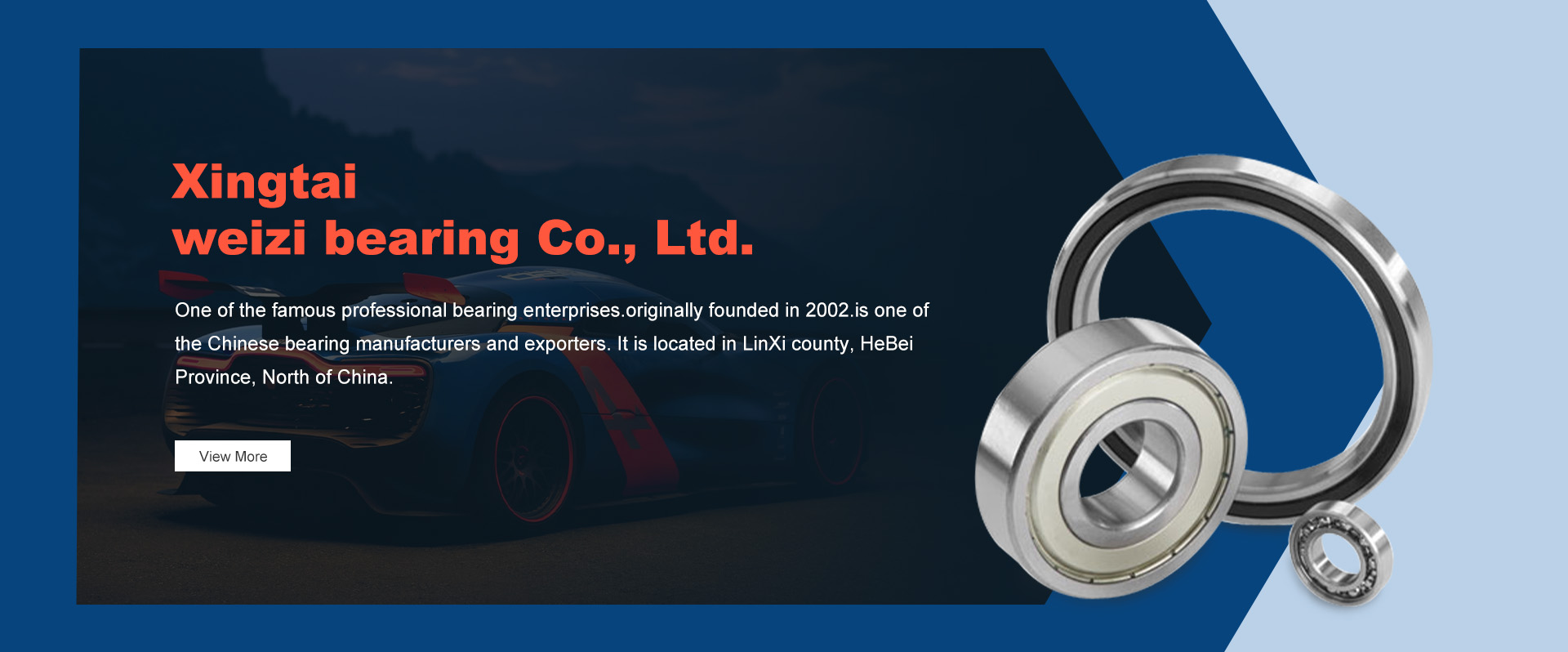
10 月 . 09, 2024 22:52 Back to list
disadvantages of deep groove ball bearing
Disadvantages of Deep Groove Ball Bearings
Deep groove ball bearings are one of the most commonly used rolling bearings in various applications due to their versatility and ability to handle both radial and axial loads. However, despite their popularity, there are several disadvantages associated with deep groove ball bearings that should be considered when selecting a bearing for specific applications.
1. Limited Load Capacity
One of the primary drawbacks of deep groove ball bearings is their limited load capacity compared to other types of bearings. While they can handle moderate radial and axial loads, they are not designed for high load conditions. This limitation can lead to premature bearing failure or reduced operational efficiency in applications requiring substantial load-bearing capabilities. In high-load scenarios, other bearing types, such as angular contact ball bearings or tapered roller bearings, may be more suitable.
2. Higher Friction and Heat Generation
Deep groove ball bearings can generate higher levels of friction, especially under high-speed or heavy-load conditions. This increased friction leads to higher temperatures within the bearing, which can adversely affect the lubrication and shorten the bearing lifespan. Excessive heat generation can also lead to thermal expansion, potentially causing the bearing to seize or fail. Therefore, in applications requiring high speed or heavy loads, it is crucial to consider the friction characteristics of the bearing and explore options that optimize performance.
3. Sensitivity to Misalignment
Another significant disadvantage of deep groove ball bearings is their sensitivity to misalignment. When a deep groove ball bearing is subjected to misalignment, it can experience uneven loading and increased wear, which can lead to early failure. Misalignment can occur due to installation errors, component deformation, or operational conditions. In applications where precise alignment is challenging to maintain, other bearing types that can tolerate misalignment may be better choices.
disadvantages of deep groove ball bearing

4. Vibration Sensitivity
Deep groove ball bearings are also sensitive to vibration, which can be detrimental to their performance and longevity. Excessive vibration can lead to dynamic loading conditions that exceed the bearing's design limits, resulting in accelerated wear and eventual failure. In environments where vibration is prevalent—such as in industrial machinery or rotating equipment—oscillations can propagate through the bearing and lead to performance degradation over time. Selecting bearings designed to withstand vibrations may mitigate this issue.
5. Noise Generation
In addition to vibration sensitivity, deep groove ball bearings can produce more operational noise compared to other types of bearings. This noise can be a significant concern in applications requiring a quiet operation, such as precision instruments or household appliances. The noise generated can be attributed to factors like ball-to-raceway contact and the general operational dynamics of the bearing. As a result, manufacturers must consider the noise performance of deep groove ball bearings, particularly in applications with stringent noise requirements.
6. Lubrication Challenges
Proper lubrication is critical for the smooth functioning and longevity of deep groove ball bearings. However, achieving and maintaining optimal lubrication can present challenges. Insufficient lubrication can lead to increased friction, overheating, and premature failure, while excessive lubrication can cause the bearing to churn lubricant, generating unnecessary heat. In environments with high contamination levels, lubrication can also become less effective, leading to increased wear. Developers must carefully select the right lubrication method and ensure maintenance protocols are in place.
Conclusion
While deep groove ball bearings offer versatility and are widely used across various industries, their disadvantages must be considered when selecting a bearing for specific applications. Limitations in load capacity, friction generation, sensitivity to misalignment, vibration, noise production, and lubrication challenges are critical factors that could impact the overall performance of machinery. Therefore, it is essential to assess the operational requirements and environment to determine the most suitable bearing type that balances performance, durability, and efficiency. By doing so, engineers and designers can make informed decisions that lead to optimal operational outcomes.
Latest news
-
Unlocking Efficiency with Spherical Roller Bearings
NewsOct.29,2024
-
The Ultimate Guide to Thrust Ball Bearings
NewsOct.29,2024
-
The Power of Thrust Roller Bearings: Engineered for Excellence
NewsOct.29,2024
-
The Power of Deep Groove Ball Bearings for Your Application Needs!
NewsOct.29,2024
-
The Power and Performance of Cylindrical Roller Bearings
NewsOct.29,2024
-
High-Quality Ball Bearing Manufacturing Machines
NewsOct.29,2024
